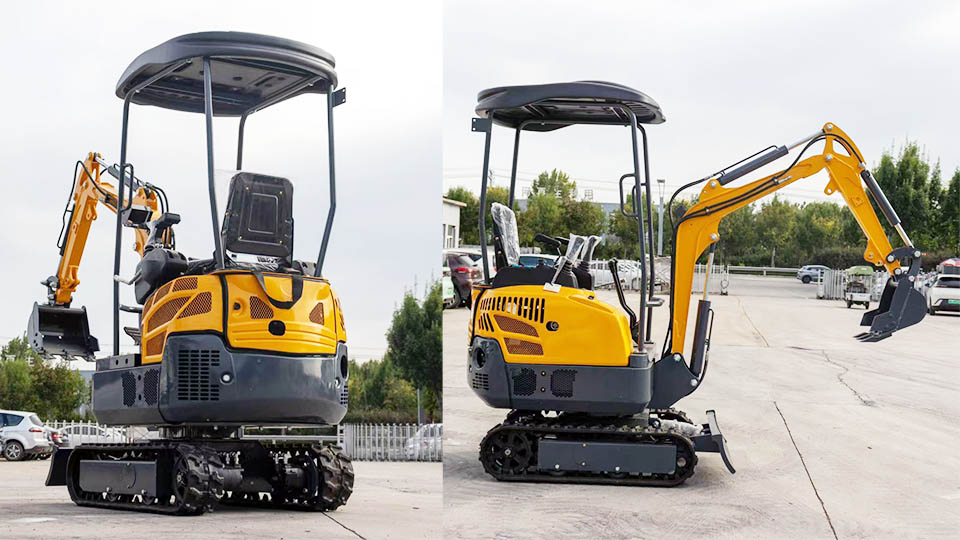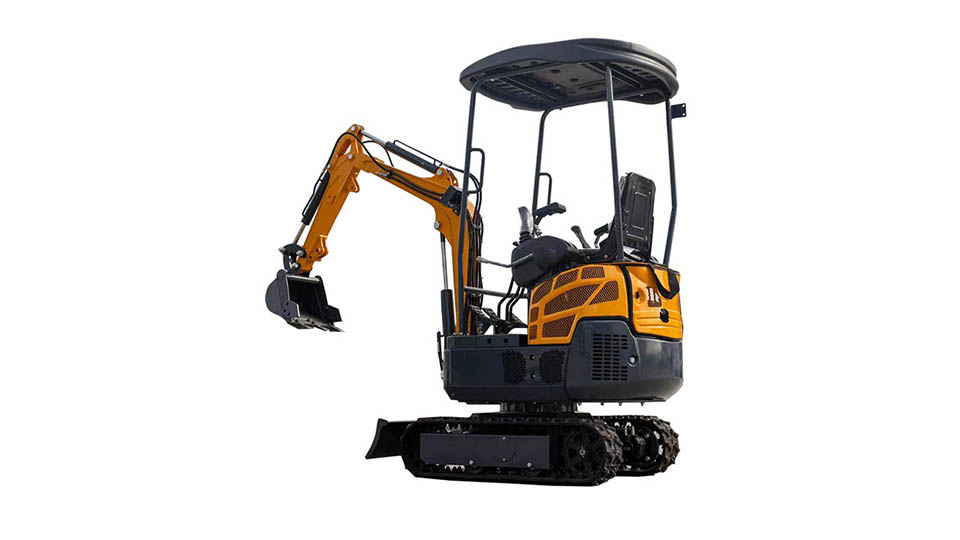When disaster strikes, whether in the form of an earthquake, hurricane, flood, or wildfire, the immediate aftermath is often characterized by chaos, devastation, and urgent calls for aid. In these critical moments, while first responders and medical teams address immediate human needs, another powerful force moves into action: heavy equipment. Among these vital machines, the excavator stands out as an indispensable tool, playing a pivotal role in every phase of disaster recovery and emergency response.
Its unique combination of digging power, lifting capability, precise control, and adaptability through various attachments makes it uniquely suited to the unpredictable and challenging conditions of a disaster zone. This technical article will explore the multifaceted role of excavators in disaster recovery and emergency response, detailing their applications across different disaster types and highlighting their crucial contribution to saving lives, restoring infrastructure, and rebuilding communities.
The Landscape of Disaster and the Need for Heavy Equipment
Natural disasters, and even large-scale human-made emergencies, often leave behind a landscape of immense destruction:
Earthquakes: Collapsed buildings, shattered infrastructure, blocked roads, and buried victims.
Hurricanes/Tornadoes: Widespread debris (trees, building components), damaged homes, flooded areas, and blocked access routes.
Floods: Submerged areas, displaced debris, damaged levees, and silt accumulation.
Wildfires: Scorched earth, unstable structures, fallen trees, and contaminated soil.
Landslides: Massive volumes of earth, rock, and debris blocking roads and burying structures.
In all these scenarios, the ability to rapidly move, clear, lift, and stabilize large, often irregularly shaped, and heavy materials is paramount. This is where excavators become critical assets. Their hydraulic power, robust construction, and ability to mount specialized attachments allow them to perform tasks that human hands alone cannot, or would take exponentially longer to accomplish.
Key Roles of Excavators in Emergency Response and Recovery
Excavators contribute across multiple phases of disaster response and recovery:
1. Search and Rescue Operations
In the immediate aftermath of events like earthquakes or building collapses, time is of the essence for locating and extracting survivors.

Debris Removal: Excavators, often smaller models or those with specialized grapples and thumbs, meticulously remove layers of rubble, concrete, and twisted metal. This allows search and rescue teams (including K9 units) to access voids and trapped individuals. The precision of hydraulic controls is crucial to avoid further collapse or injury to victims.
Creating Access Points: They can carefully breach damaged structures or clear narrow pathways for rescue personnel to reach inaccessible areas.
Lifting Heavy Objects: When victims are pinned under large, heavy objects, excavators with appropriate lifting attachments (like slings or magnets) can gently lift or move these obstructions, freeing trapped individuals. This requires highly skilled operators who can perform delicate maneuvers with extreme care.
Case in Point: Urban Search and Rescue after Earthquakes
Following devastating earthquakes in Turkey and Syria in 2023, and earlier in Haiti (2010) or Japan (2011), heavy excavators were seen tirelessly working amidst the ruins. Their primary task was to systematically clear debris, piece by piece, under the guidance of rescue teams. This painstaking work created pathways for rescuers, stabilized unstable piles of rubble, and carefully exposed areas where survivors were suspected to be. The ability of an excavator to "reach" into precarious situations with its boom and stick, and to manipulate debris with its bucket or grapple, was invaluable.
2. Clearing Access Routes and Establishing Logistics
Disasters often render roads impassable, isolating affected communities and hindering the delivery of essential aid.
Road Clearing: Excavators, especially larger models with powerful buckets and breakers, are deployed to remove fallen trees, landslides, collapsed bridge sections, and other debris blocking critical transportation arteries. Their ability to quickly scoop, push, and break up large obstacles is vital for reopening roads for emergency vehicles, supply convoys, and evacuation routes.
Temporary Road Construction: In areas where existing roads are completely destroyed, excavators can rapidly cut temporary access roads, often through challenging terrain, to bypass obstacles and reach isolated populations.
Establishing Staging Areas: They can level uneven ground to create temporary helipads, field hospitals, or logistical staging areas for aid distribution.
Case in Point: Hurricane Aftermath and Forest Fires
After hurricanes, coastal areas are often littered with downed trees and power lines. Excavators with grapples are incredibly efficient at gathering and loading these large, unwieldy pieces of debris. In the aftermath of major wildfires, excavators are used to clear burnt timber, create firebreaks to prevent reignition, and restore access to damaged areas, often working on steep and unstable slopes. The deployment of track-mounted excavators is preferred in these conditions due to their superior traction and lower ground pressure.
3. Debris Management and Site Cleanup
Once immediate rescue efforts subside, the daunting task of debris removal and site cleanup begins. This is often the longest and most resource-intensive phase.
Large-Scale Debris Removal: Excavators with large capacity buckets or specialized grapples are used to scoop, load, and transfer millions of cubic yards of debris (concrete, steel, wood, personal belongings) into dump trucks for transport to designated waste sites or recycling centers.
Material Segregation: Equipped with sorting grapples, excavators can efficiently separate different types of materials (e.g., metals from concrete, wood from plastic) for recycling, significantly reducing the volume of waste sent to landfills and supporting sustainable recovery.

Hazardous Material Identification: While not directly handling hazardous materials, excavators can carefully uncover and separate debris to expose areas where hazardous substances might be present, allowing specialized teams to safely address them.
Demolition of Unstable Structures: Buildings deemed unsafe or beyond repair must be demolished in a controlled manner. Excavators with hydraulic hammers (breakers) or pulverizers systematically break down structures, reducing them to manageable pieces for removal. Long-reach excavators are particularly useful for safely bringing down tall, unstable structures from a distance.
Case in Point: Post-Flood River Management
Following severe riverine flooding, riverbeds can become choked with silt, logs, and debris, altering water flow and increasing future flood risks. Amphibious excavators or those operating from barges (pontoons) are used for dredging, removing accumulated sediment, and re-establishing proper river channels. On land, excavators are used to repair damaged levees and reconstruct flood defenses.
4. Infrastructure Restoration and Rebuilding
As communities transition from recovery to reconstruction, excavators remain vital for laying the groundwork for new infrastructure.
Foundation Work: Digging new foundations for homes, commercial buildings, and critical infrastructure.
Utility Repair: Excavating trenches for damaged water lines, sewer systems, gas lines, and electrical conduits. Their precision digging prevents further damage to existing, potentially fragile, underground networks.
Road and Bridge Reconstruction: Preparing subgrades, placing aggregates, and assisting with the lifting and placement of bridge components.
Land Reshaping and Erosion Control: Remediating land affected by landslides or erosion, restoring stable slopes, and creating new drainage systems.
Case in Point: Rebuilding after Major Earthquakes or Tsunamis
In areas devastated by events like the 2004 Indian Ocean Tsunami or the 2011 Great East Japan Earthquake, the scale of destruction required complete rebuilding of infrastructure. Excavators were at the forefront of this effort, from clearing entire devastated towns to preparing new land for housing, constructing new seawalls, and rebuilding transportation networks.
Specialized Excavator Features and Attachments for Emergency Work
The versatility of excavators in disaster response is greatly enhanced by their ability to utilize a wide array of specialized attachments:
Hydraulic Breakers/Hammers: For pulverizing concrete, rock, and other hard materials. Essential for breaking through collapsed structures.
Grapples: For sorting, loading, and moving irregular and bulky debris like twisted metal, concrete chunks, and tree limbs.
Shears: For cutting through steel reinforcement bars, pipes, and other metal structures during demolition.
Clamshell Buckets: Ideal for precise excavation and removal of loose soil or debris in tight spaces.
Long-Reach Booms: Extend the excavator's reach for high-level demolition or to access hazardous areas from a safe distance (e.g., clearing debris from precarious cliffs after a landslide).
Compactors/Vibratory Plates: For compacting soil to stabilize ground for temporary access roads or staging areas.
Amphibious Undercarriages: Allow excavators to float and operate effectively in flooded areas, swamps, or shallow water.
Remote-Controlled Excavators: In highly hazardous environments (e.g., unstable structures, areas with chemical contamination, nuclear disaster sites), remote-controlled or teleoperated excavators allow operators to work from a safe distance, minimizing risk to human life. (As seen in the Fukushima Daiichi nuclear disaster cleanup).
GPS and Telematics: Modern excavators often incorporate GPS for precise mapping and navigation in unfamiliar or altered terrain, and telematics systems for remote monitoring of machine health and location, crucial for coordinated disaster response logistics.
The Human Element: Training and Coordination
Beyond the machinery itself, the success of excavator deployment in disaster zones hinges on the highly skilled operators who maneuver these powerful tools. Operating an excavator in a collapsed building or on an unstable landslide requires immense precision, judgment, and calm under pressure. Operators must be trained not just in general operation but also in safety protocols specific to disaster environments, including:
Identifying unstable structures.
Working safely around utilities.
Communicating effectively with search and rescue teams.
Understanding the properties of different types of debris.
Furthermore, effective coordination between heavy equipment crews, first responders, emergency management agencies, and local authorities is paramount. Strategic deployment of excavators, precise tasking, and clear communication channels ensure that these powerful resources are utilized efficiently and safely to maximize their impact.
Conclusion
The excavator is an unsung hero of disaster recovery and emergency response. Its multifaceted capabilities, from meticulously sifting through rubble for survivors to clearing entire swaths of destruction, make it an indispensable asset in the face of natural or man-made catastrophes. The stories of communities painstakingly rebuilt and lives courageously saved after devastating events often have excavators at their very core, tirelessly working to restore order from chaos.
As climate change potentially leads to more frequent and intense natural disasters, and as urban environments become more complex, the role of advanced excavators, operated by skilled professionals, will only grow in importance. Their power, versatility, and precision will continue to be the driving force behind the arduous but essential journey from devastation to recovery and renewal, demonstrating that these giants of steel and hydraulics are truly vital tools for a resilient future.
Post time:Sep-25-2020
